
Plumbing at Shōgunate-Era Castles
The Rulers of Japan
Japan's monarch is the Emperor.
According to Shintō there has always been
an Emperor since shortly after the creation of the universe.
According to historians the first Emperors go back to
the late Kofun period of the 3rd to 6th centuries CE.
Practically speaking, however, a series of military dictators
known as the shōgun
ruled Japan from 1185 to 1868
(with a brief gap of 1333–1336).
There were two ruling classes during those centuries
of the Shōgunate in Japan.
The Emperor was the chief priest of the Shintō religion,
while the shōgun was head of the military and also had
civil, diplomatic, and judicial authority.
Feudal lords ruled over various regions
and answered to the shōgun.
These daimyō or feudal lords
were based in large castles,
ruins and reconstructions of which
can be found today in many cities.
Let's see some Japanese feudal castle plumbing!
Japan's Emperor
Japan's Emperor is of a long line of succession. Naruhito, who took the Chrysanthemum Throne in 2019, is the 126th monarch according to the official list. "Monarch" because some, centuries ago, were Empresses.
Shintō holds that the Emperor is descended from the very first deities of Japanese cosmology, Kuninotokotachi and Amenominakanushi, who came into being on their own.
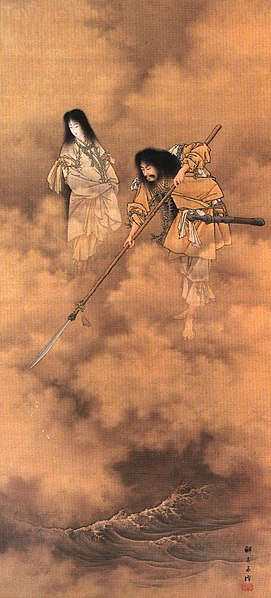
Izanami and Izanagi creating the islands of Japan, as depicted in a painting by Eitaku Kobayashi around 1885.
Those two created Izanagi and Izanami, who were brother and sister and also husband and wife. They in turn gave birth to many of the kami, numerous gods or deities recognized by Shintō. They also created the islands of Japan, as seen in this painting.
Izanami died after giving birth to a fire-god. Her brother/husband Izanagi killed the fire-god and then he gave birth to Ameterasu, the sun goddess, from his left eye; Tsukuyomi, the moon god, from his right eye, and Susano-o no Mikoto, the storm god, from his nose. This was like Athena emerging from Zeus's head, but times three.
Amaterasu is the goddess of the sun in particular and the entire universe in general. She gave the Sacred Mirror, the Sacred Sword, and the Sacred Jewel to her grandson. They're the three sacred regalia of the Emperor, and they supposedly still exist. They're only seen by certain priests and the Emperor during the enthronement ceremony. Otherwise they remain hidden.
Amaterasu's grandson then gave them to his great-grandson, Jimmu, who became the first Emperor of Japan. Jimmu's assumption of the throne is traditionally dated as 660 BCE as told in the Kojiki and the Nihon Shoki, or the Records of Ancient Matters and the Annals of Japan, respectively. Those were collections of legends and creation myths written down around 711–712 and 720 CE, respectively. The event is now marked as National Foundation Day on February 11.
Historians, however, generally agree that while the Imperial House of Japan is among the oldest in the world, its historical origins as any form of somewhat centralized rule date back to the late Kofun period of the 3rd through 6th centuries CE. The Emperors up to Suinin, said to be the 11th Emperor who ruled from 29 BCE to 70 CE, are considered "largely legendary" due to a lack of material to verify and study their lives. His father, Sujin, is the first Emperor that historians believe existed, but there is almost no information beyond his name, and the reported dates for his reign vary.
Historians designate Emperor Keikō (#12, 71–130 CE) through Emperor Ingyō (#19, 410–453 CE) as "perhaps factual", with the dates of their reigns "traditional" but with nothing to back them up.
Emperor Ankō (#20, 401–456 CE) is the first one generally recognized by historians as a ruler of all or part of Japan. Emperor Kinmei (#29, 509–571 CE) is the first one with historically verifiable dates for the start and end of his reign.
By the early 7th century CE, the Emperor had begun to be called "the Son of Heaven", tenshi or tenshi-sama. The title of "Emperor" was borrowed from China, derived from Chinese characters, and it was retroactively applied to the legendary earlier rulers listed in the Kojiki and Nihon Shoki. Now the Emperor is referred to as Tennō in Japanese, literally "Emperor of Heaven" or "Heavenly Sovereign".
The Shōgun
The Emperor would appoint a military leader called the Shōgun, a position that came to be the effective ruler of the nation. The Emperor was dedicated to Shintō ritual at Kyōto. The Shōgun was head of the military, and also had full authority over civic and diplomatic concerns. He was nominally subordinate to the Emperor and the kuge, the aristocratic class in Kyōto that dominated the Imperial Court. But effectively, the Shōgun ran Japan.
VisitingKamakura
Minamoto no Yoritomo is considered to be the first Shōgun of Japan. He founded the Kamakura Shōgunate, which led to the city of Kamakura, now a beach town an hour's train ride south of Tokyo, becoming the 4th largest city in the world while becoming the ruling center of Japan.
The Shōgunate lasted from 1185 to 1868, with a break gap in 1333–1336 when an Emperor resumed full control.
Amazon
ASIN: 1982603844
Amazon
ASIN: B0000A2ZNX
The Shōgun was in control of pretty much everything except the Shintō religion, but he couldn't do everything by himself!
The daimyō were powerful feudal lords who ruled most of Japan from castles at the centers of their vast hereditary land holdings. They were subordinate to the Shōgun, but in an era long before modern telecommunications and the 320 kph Shinkansen bullet trains, the Shōgun was far away and the kuge and the Emperor even farther away.
Aizuwakamatsu
VisitingAizuwakamatsu
Today's city of Aizuwakamatsu is in a broad valley surrounded by mountains, in a location settled in prehistoric times. The legends say that Emperor Sujin (#10, traditionally reigned 97–30 BCE) sent two generals to this region to put down a rebellion. The area was originally known simply as Aizu. Below is the view from the train crossing the valley, with low clouds coming down out of the surrounding mountains.
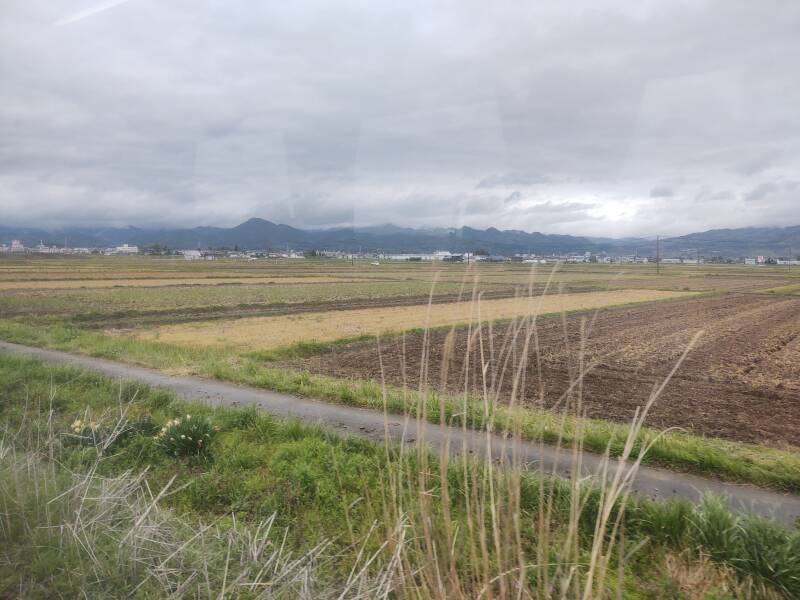
🚧 under construction 🚧 Visiting
Japan's kofun
The Aizu-Otsuka kofun dates from the 4th century CE. The kofun are megalithic tombs covered by keyhole-shaped earth mounds. They were constructed from the early 3rd through the early 7th centuries CE. The kofun might contain information about some of the earliest historical Emperors. However, the Imperial Household Agency has prohibited all access to those traditionally associated with early Emperors. Akihito, who ruled as the 125th Emperor from 1989 until his abdication in 2019, made public statements about wanting to change the position of Emperor from that of a god or robot to something closer to the Japanese people. In 2016, the Imperial Household Agency allowed researchers to examine some kofun in limited ways.
However, this was Shōgun and samurai territory, far from the Imperial Court in Kyōto, and so this kofun has been scientifically investigated. It's on a small hill, overlooking the modern cemetery.
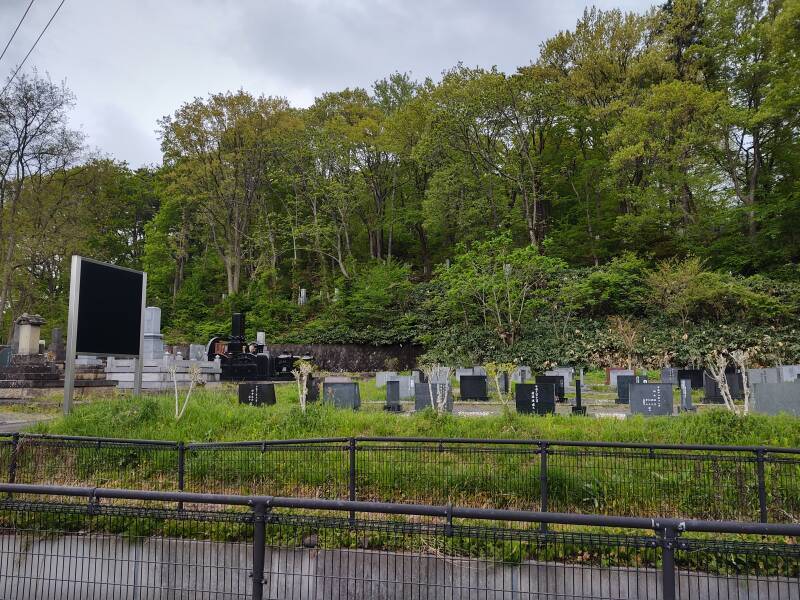
Before the late 1100s and the establishment of the Shōgunate, Aizu became a market town and the base of regional warlords. It came under the control of the Kamakura Shōgunate in 1192. A samurai named Suwara Yoshitsura was given control over all of Aizu, making him the daimyō or feudal lord. One of his descendants, Ashina Naomori, began building the city's first castle in 1384. It was called Kurokawa-jō
Japanese
for "castle"
Control of Aizu passed from the Miura clan to the Ashina clan, the Satake clan, and back to the Ashina clan. Toyotomi Hideyoshi, a samurai and daimyō called the second "Great Unifier" of Japan, took control and gave Aizu to Gamō Ujisato, one of his allies. He began building a new castle at the town in 1592, following the latest designs for military defenses. At its center he built an enormous seven-story tenshu or central keep. The town was renamed Wakamatsu, and the castle was renamed Tsuruga-jō.
Uesugi Kenshin and the ninja latrine assassinationAizu was briefly controlled by Uesugi Kagekatsu in 1600. The Shōgun Tokugawa Ieyasu accused Uesugi of gathering troops in Aizu, a prelude for an attempt to seize power. He then transferred the Uesugi clan to Yonezawa, where they could cause far less trouble.
Aizu grew economically and culturally after that, as the Shōgun passed control of it to a family member. They ruled the Aizu domain for the next two centuries. Aizu was an important base of the Tokugawa shōgunate's stronghold within the Tōhoku region, and militarily it was one of the strongest.
However, all good things end. In 1853, U.S. Navy Commodore Matthew Perry sailed his fleet into the bay of Edo, which at that time was a fishing town on a bay forming a fantastic harbor. Perry demanded that the Shōgun open Japan's ports to U.S. commercial ships. The Shōgun was out-gunned and forced to agree.
Well, that was the end of confidence in the Shōgun. The Tokugawa Shōgunate soon collapsed, but there were various struggles before that happened. Part of that was the Battle of Aizu, in which its castle fell.
Forces under the young Emperor Meiji, for whom the Meiji Restoration was named, had the Aizu castle demolished. A group of 22 people, including loyal retainers or the Aizu domain and their families, managed to escape to California. In 1869 they established the first Japanese colony in America and the only samurai settlement outside Japan, the short-lived Wakamatsu Tea and Silk Farm Colony. A drought in 1871 and a labor dispute led to the colony's bankruptcy.
Meanwhile, Emperor Meiji moved the Imperial Court to Edo, which was renamed Tōkyō. The former castle grounds became an Imperial Japanese Army garrison until 1908. The tenshu was reconstructed in 1965. As with many of Japan's historical reconstructions after the experiences of the U.S. incendiary bombing raids late in World War II, it is built from concrete carefully shaped and painted to strongly resemble the original materials.
Let's see what remains of the plumbing at Aizu-Wakamatsu Castle!
The town was roughly square, about a kilometer on a side, protected on the south side by the river and on the other sides by an outer barrier. The castle was 600 by 400 meters with this broad moat outside the high and thick stone walls.
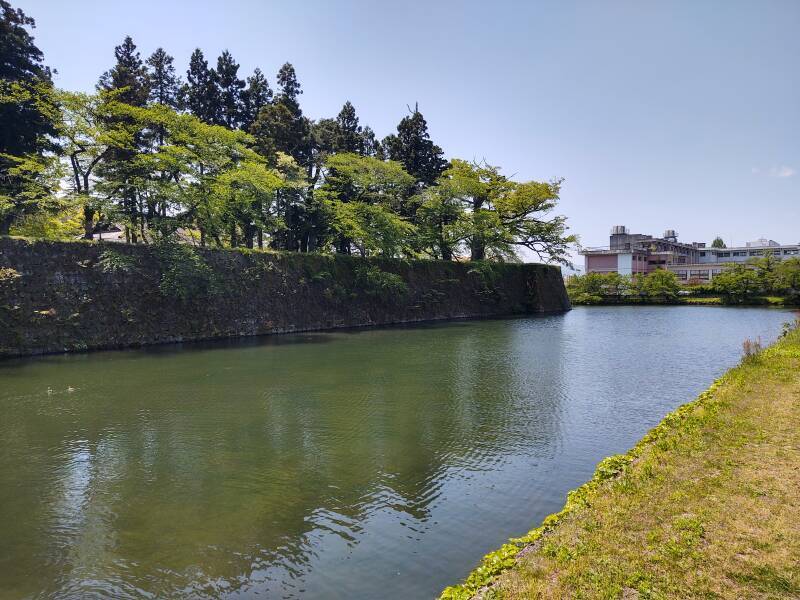
The pentagonal inner bailey is about 200 meters wide, with the reconstructed tenshu near the northwest corner. The area is a city park. Here are some modern water fountains near the tenshu.
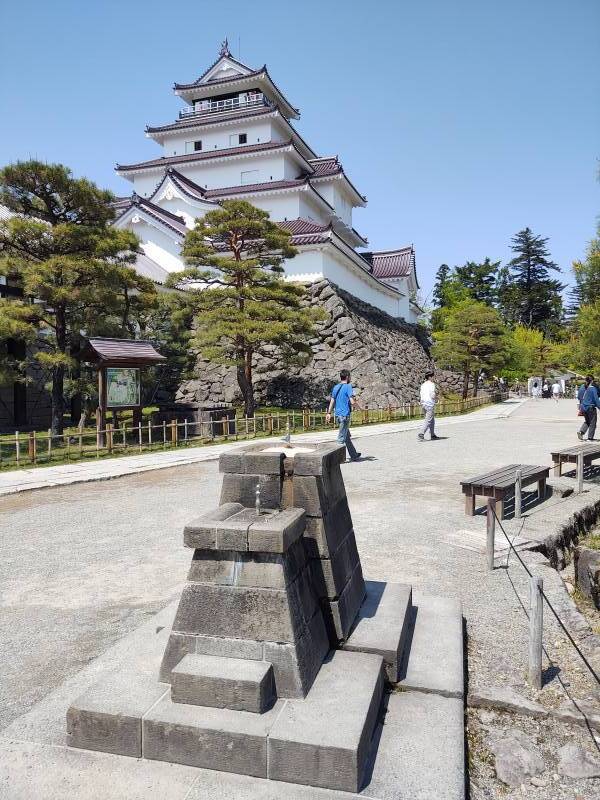
Further back, near the southern perimeter of the bailey, are some cisterns associated with horses, or うまあらいいし or uma arai-ishi. A sign explains:
Uma Arai-ishi
On an embankment on the south side of the main castle grounds
was a stable where the heads of the clan could practice
horsemanship skills.
It is said that the uma arai-ishi
was used to wash the horses.
The cistern is the square stone structure with a wooden cover, under the trellis.
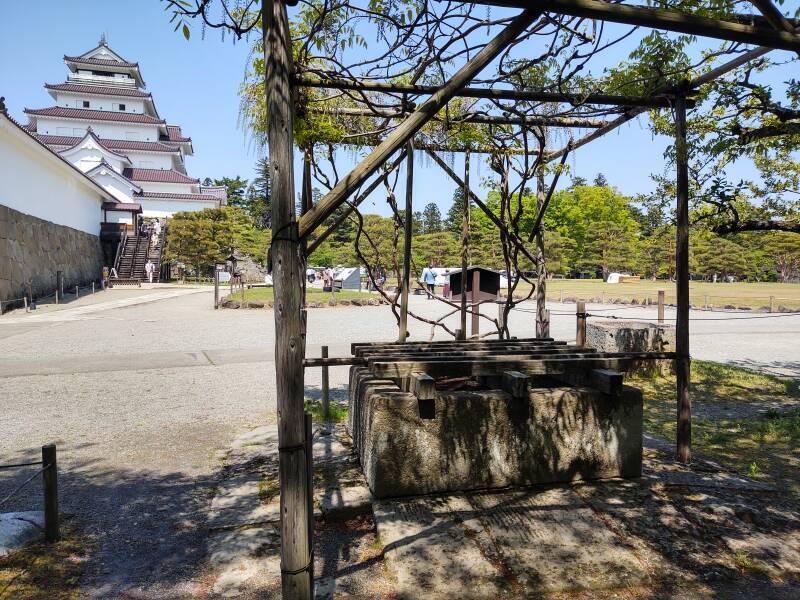
While most of the shōgunate-associated plumbing on this page is modern, here are some actual period daimyō water features!
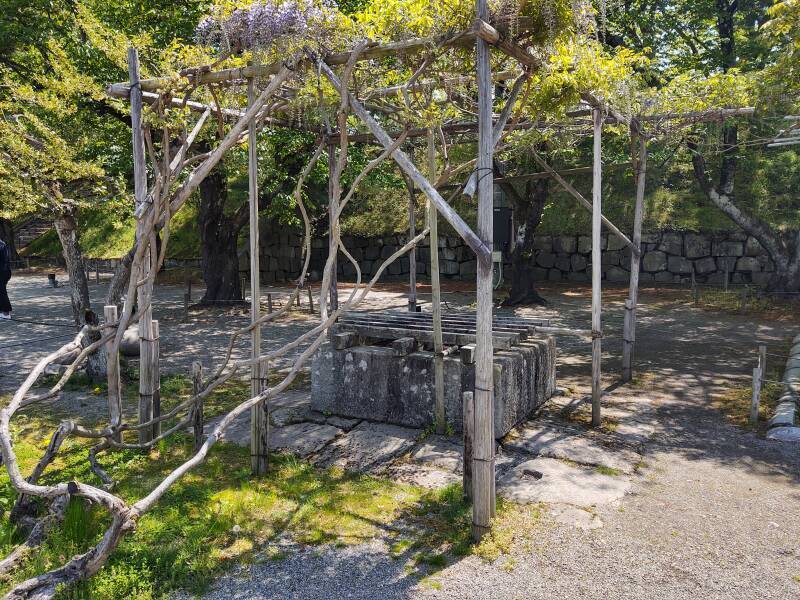
This stone water tank sits nearby.
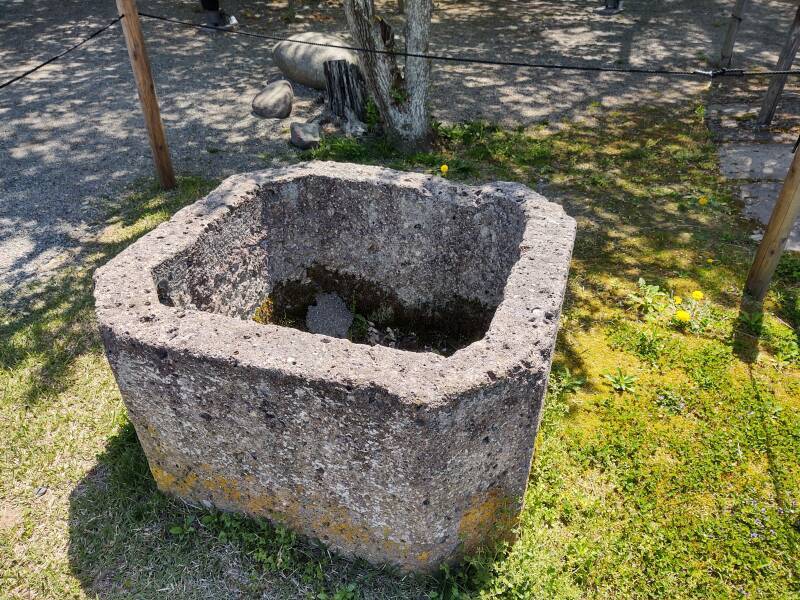
Yamagata
Japanese
for "domain"
Yamagata-han was a feudal domain based in a castle in the city of Yamagata. Today it's in a park a short walk north from the train station. Shiba Iekane had built the first castle here around 1360, and took the name "Mogami" from the nearby town, founding the Mogami clan. The location controls travel through the Ōu Mountains between the Pacific coast to the east and the Shōnai Plains and the Sea of Japan in the west.
Yamagata-han was stable and powerful under the 1571–1614 rule of Mogami Yoshiaki. He was born in 1546 and took control of the Mogami clan in 1571. He controlled the clan and Yamagata-han until his death in 1614.
Yoshiaki grew the domain to be the fifth largest in Japan excluding the holdings of the Tokugawa shōgun himself, bringing the culture of Kyōto and Ōsaka far to the southwest to the north-central Tōhoku region.
Yoshiaki was known as the "Fox of Dewa", that being the province in which Yamagata-han was located. He designed and supervised the construction of the castle town, and directed several nearby dam-building and irrigation projects that improved river navigation and rice farming.
In 1592 Yoshiaki rebuilt Yamagata Castle, which was also known as Ka-jō. He added two baileys and several two to three story yagura or watchtowers. The castle never had a tall central tenshu as we saw above at Aizu-wakamatsu.
After Yoshiaki's death in 1614, Yamagata changed hands many times. Many other han were quite stable through the Edo period, the period from 1603 to 1867 when the Tokugawa Shōgunate ruled Japan through 300 regional daimyō,
The han system was abolished in 1871. The castle grounds were sold to the national government the following year and became an Imperial Japanese Army base. After World War II it became Kajō Park. The park now contains the prefectural museum which has some armor and other items that had belonged to Mogami Yoshiaki.
The East Gate and connected bailey were restored in the 1980s and 1990s. The city is planning to further restore the castle, as much as is practical, to its condition in the time of Mogami Yoshiaki. Let's cross the bridge and enter the East Gate.
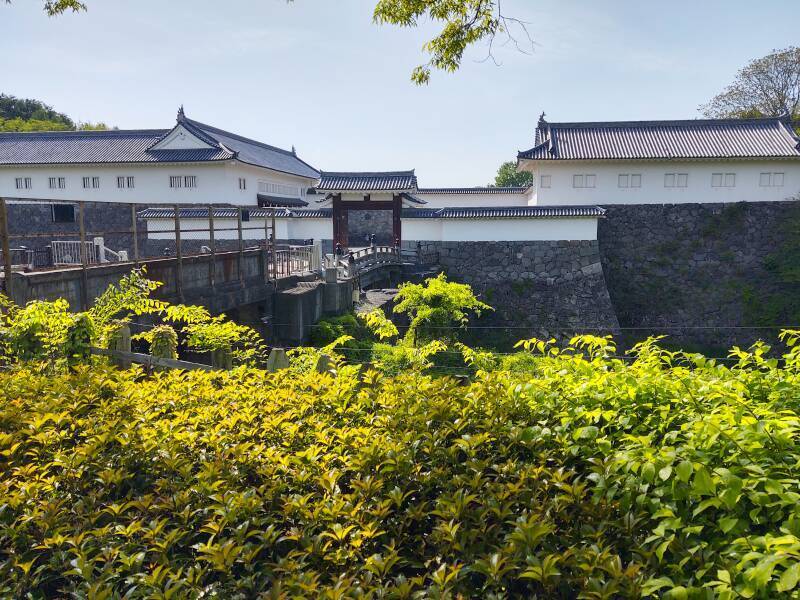
The castle grounds are still surrounded by a moat. The rail line runs along the eastern side of the moat.
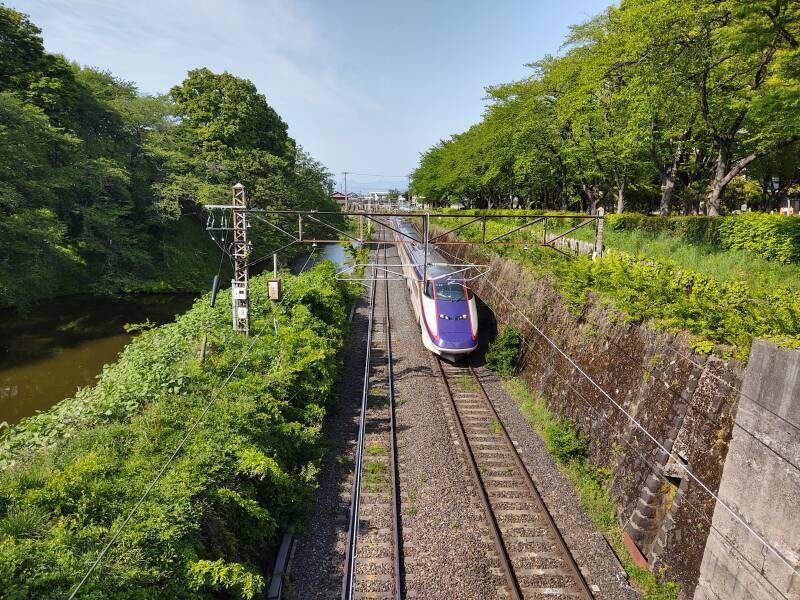
Of course you couldn't just casually stroll into the castle in those days. The outer East Gate leads to a square courtyard, where a second gate controlled access further into the bailey.
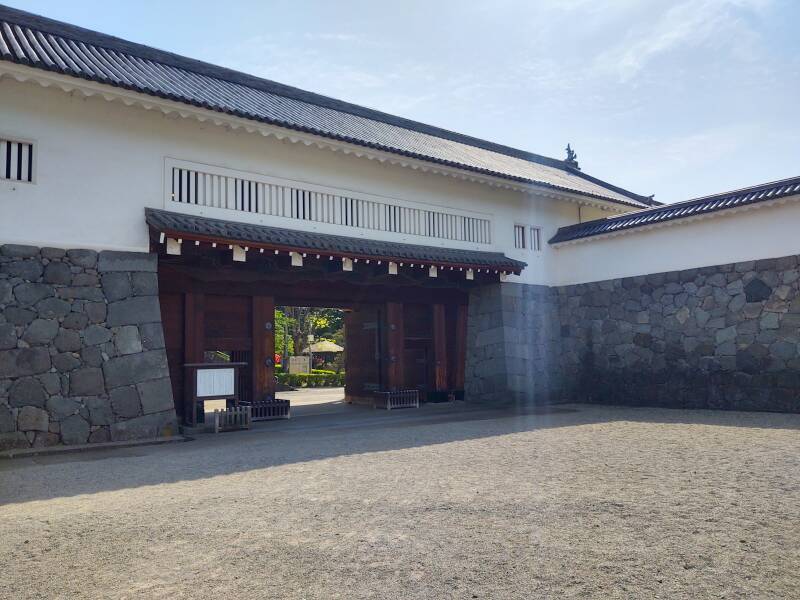
From the castle walls you can look back over the moat toward the city center.
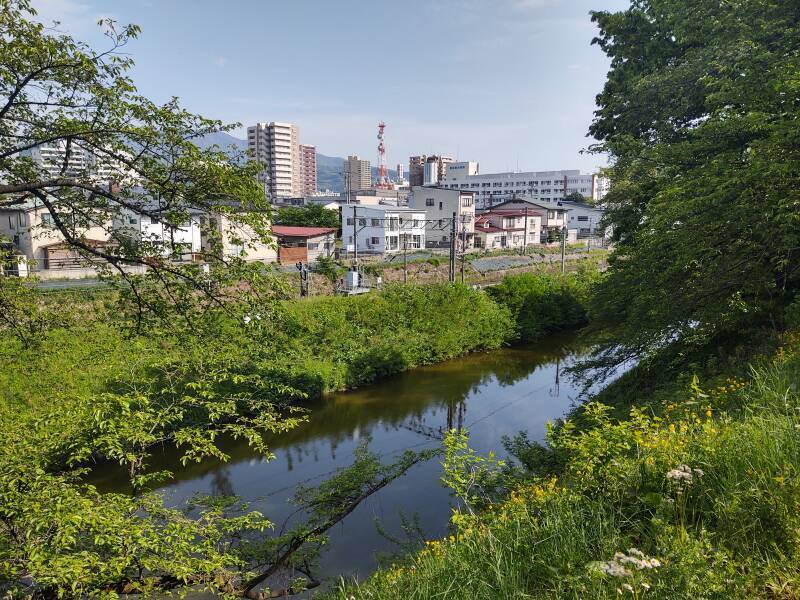
Once within the bailey, you find a dramatic statue of the Fox of Dewa, Mogami Yoshiaki. The T-shaped upper story of the castle contains the prefectural history museum.
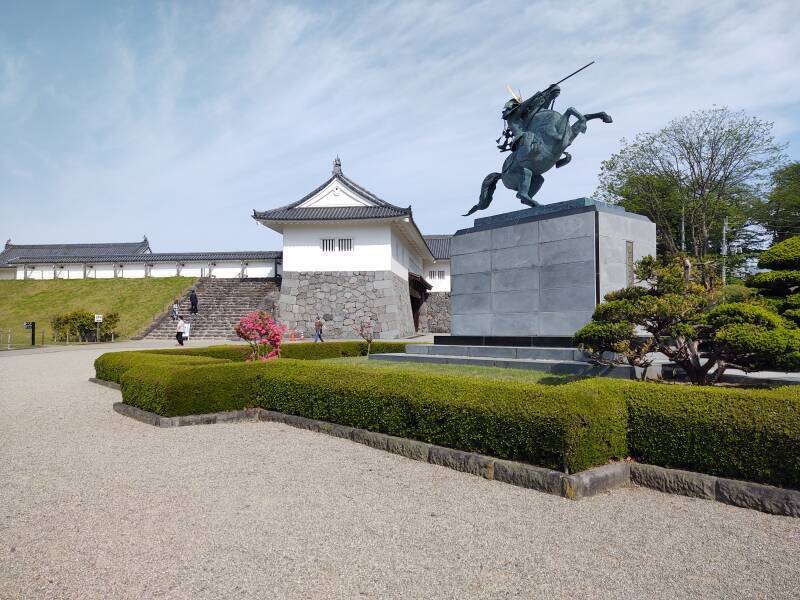
A nearby water fountain provides refreshment.
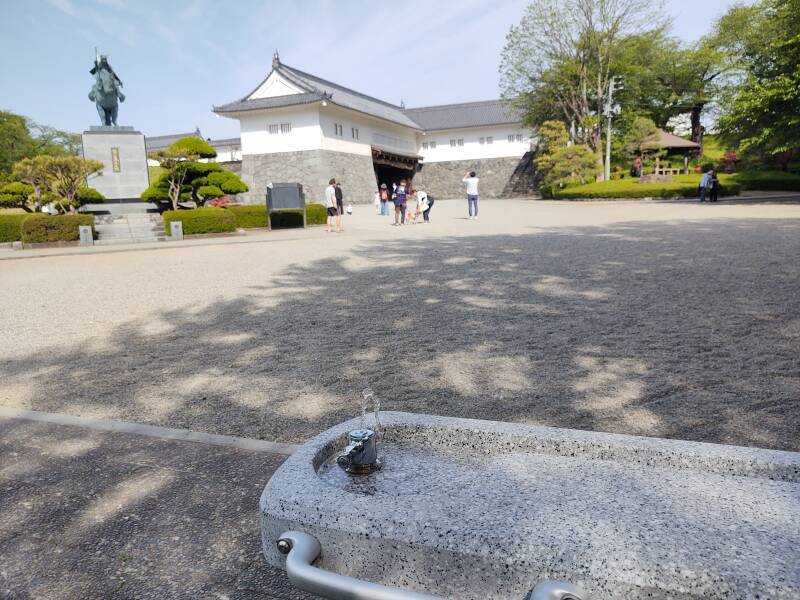
A public lavatory is nearby.
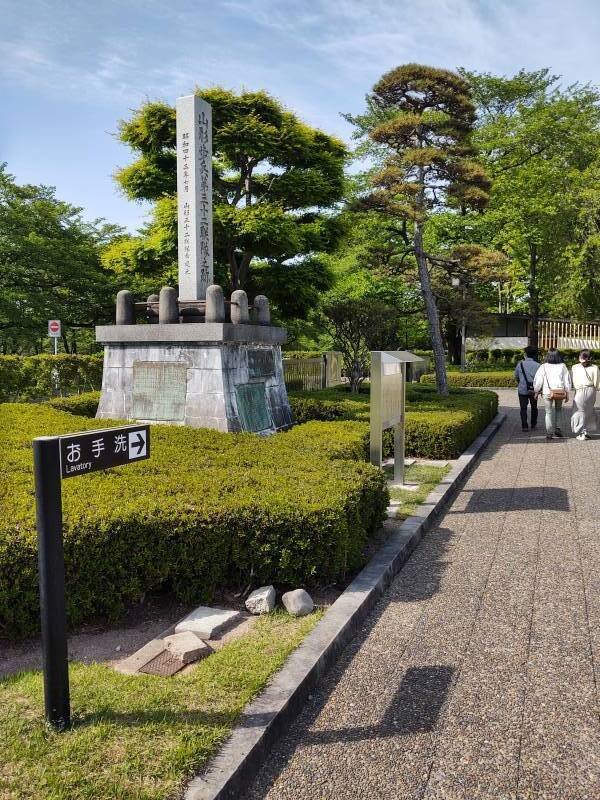
It's of an interesting modern design.
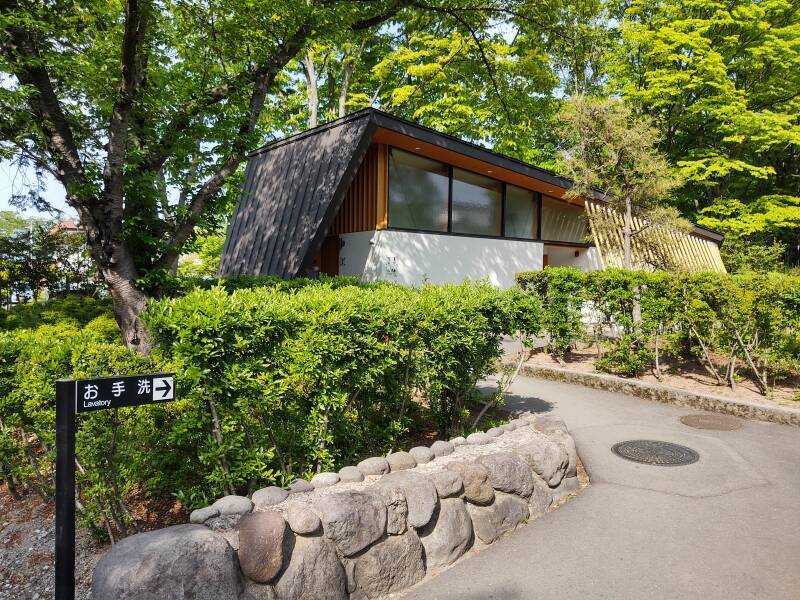
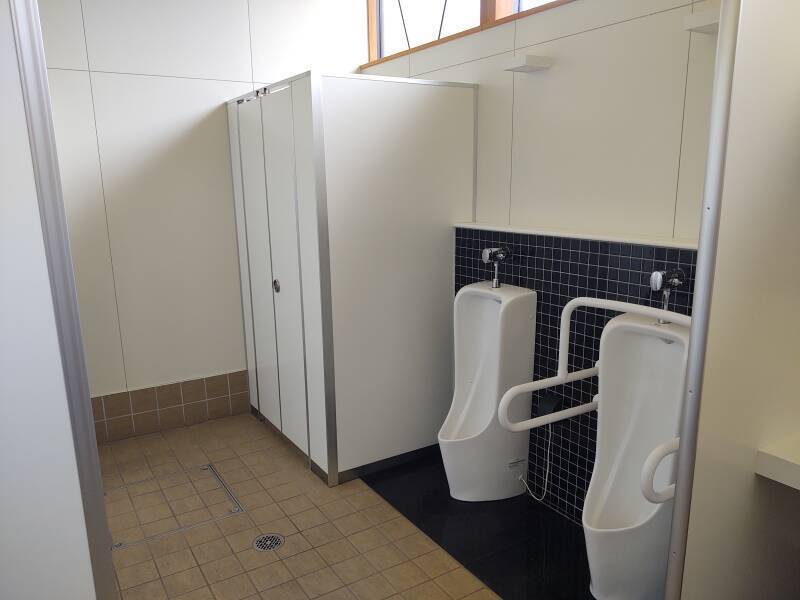
Of course it's clean, and the toilets have heated seats with water jets. This is Japan.
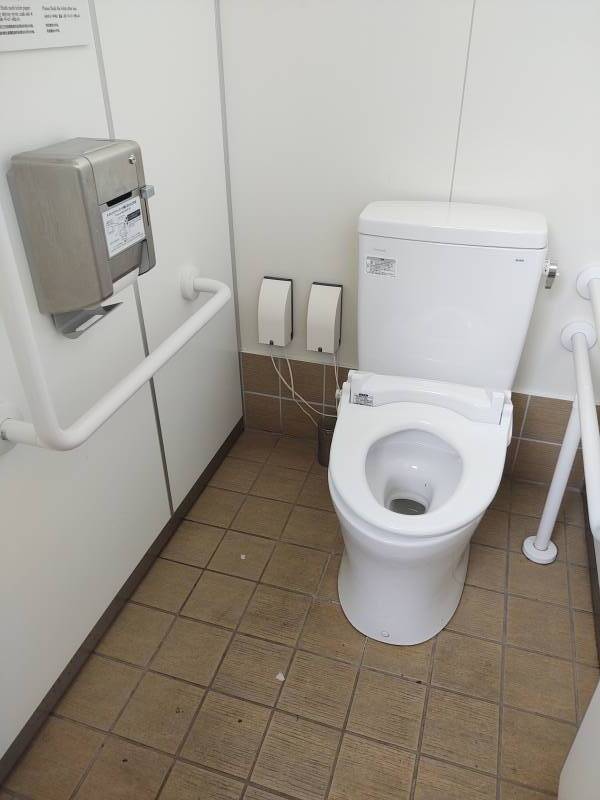
Usuki
Visitingthe Ōita area
🚧 under construction 🚧
I was on Kyūshū, the southwestern most of the four largest islands of Japan. I was staying in Ōita while making day trips to the Aso caldera and various prehistoric tombs. I also went to Usuki to see the nearby rock-face Buddha sculptures. While in Usuki, I checked out the ruins of its castle. And, of course, the plumbing.
Usuki-jō, also called Nyūjima-jō, was originally built in 1562 by the daimyō Ōtomo Sōrin. It's a short walk west from the train station.
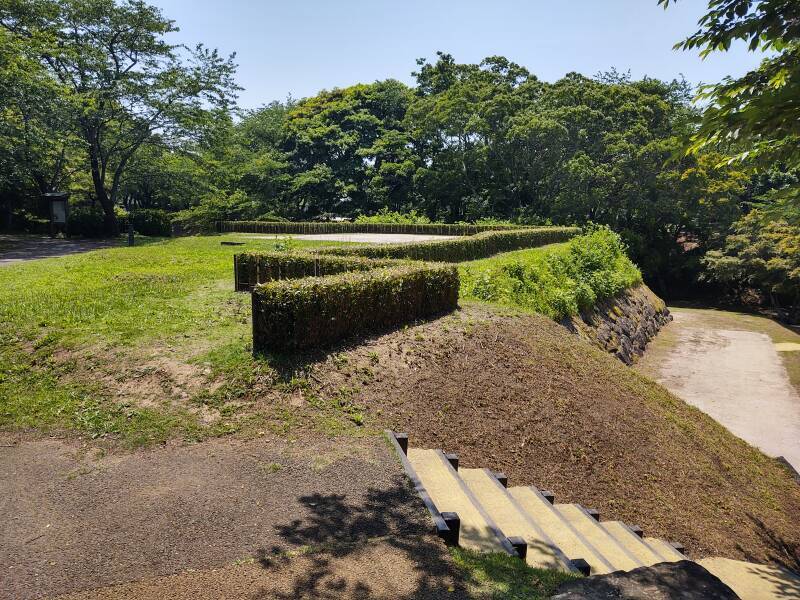
Amazon
ASIN: B01LTI119U
The castle overlooks the harbor, which opens into the Bungo Channel between Kyūshū and Shikoku, respectively the third and fourth-largest islands of Japan. The Inland Sea is to the north, to the left in this picture. To the right or the south the Bungo Channel opens into the Pacific Ocean. This is where four men from the Dutch ship De Liefde became stranded in April 1600. This first contact led to many years of trade between the Netherlands and Japan.
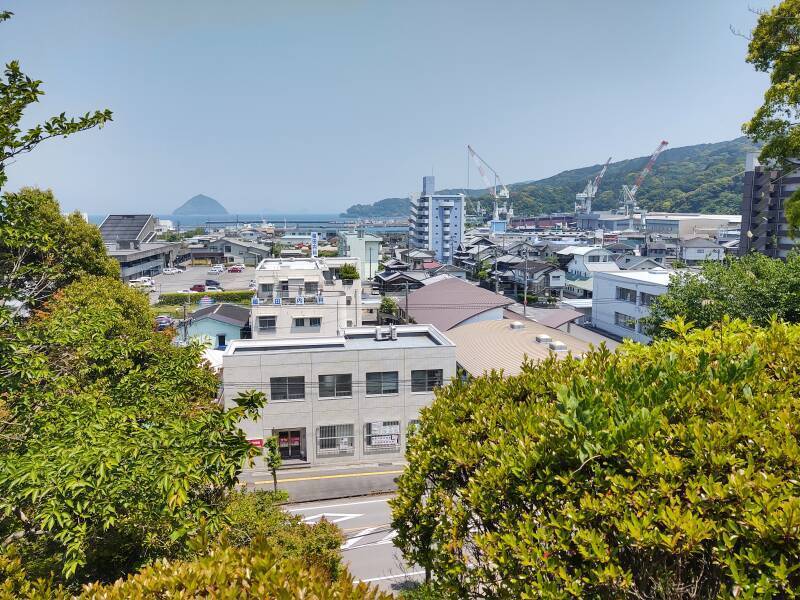
Japanese
for "gate"
This is Utonoguchi-mon-wakiyagura, which means something like "Three-Story Building". It controlled the daimyō's emergency exit from the castle through the Utono-guchi-mon.
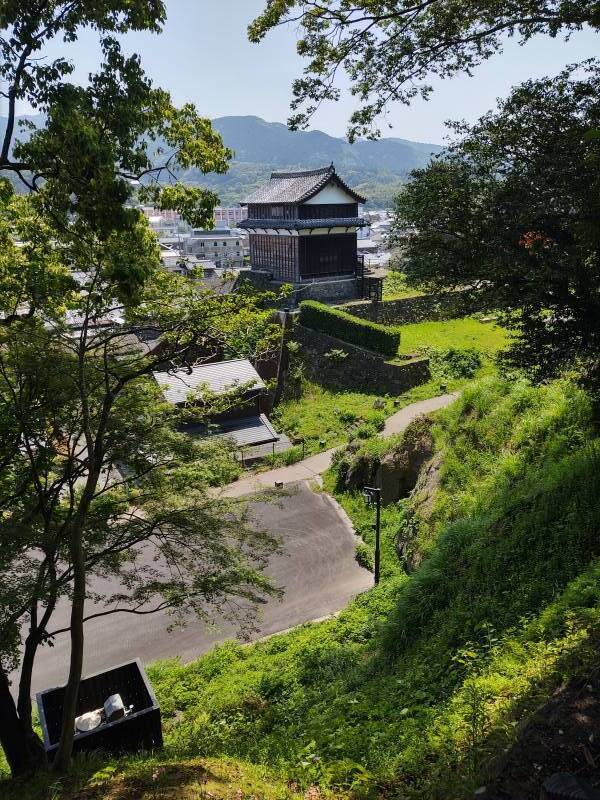
The vermillion torii or gates lead up to a set of Shintō shrines at the top of the slope. The shōgun and the samurai were Buddhist, the Shintō shrines were added after the Meiji Restoration.
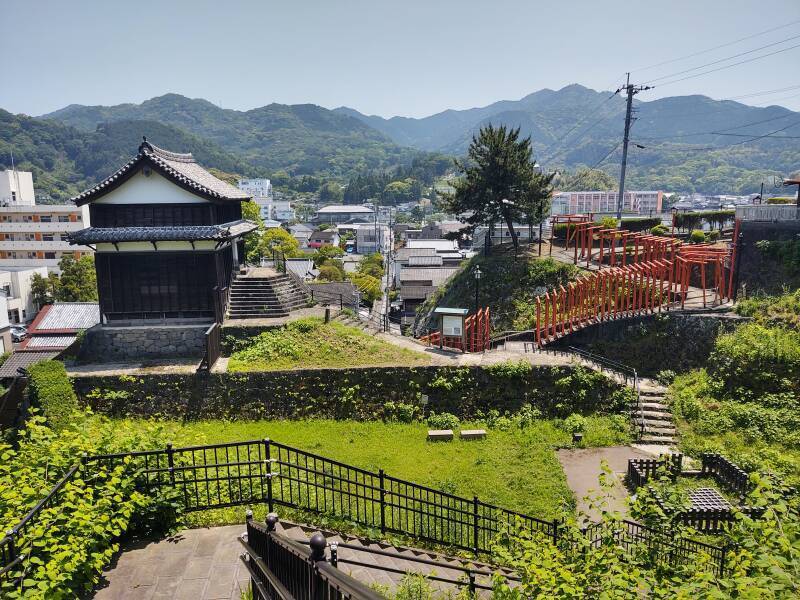
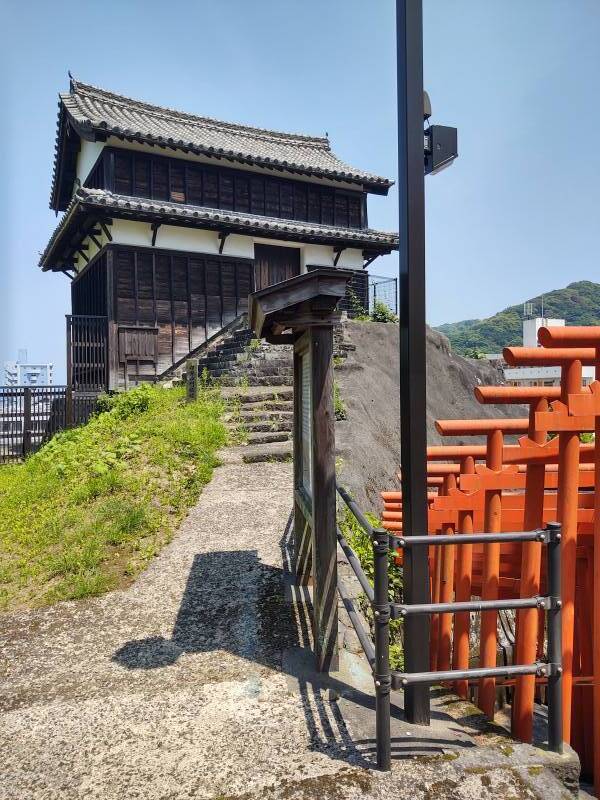
Up the slope through those torii into the inner bailey, there's a pleasant park with these water fountains.
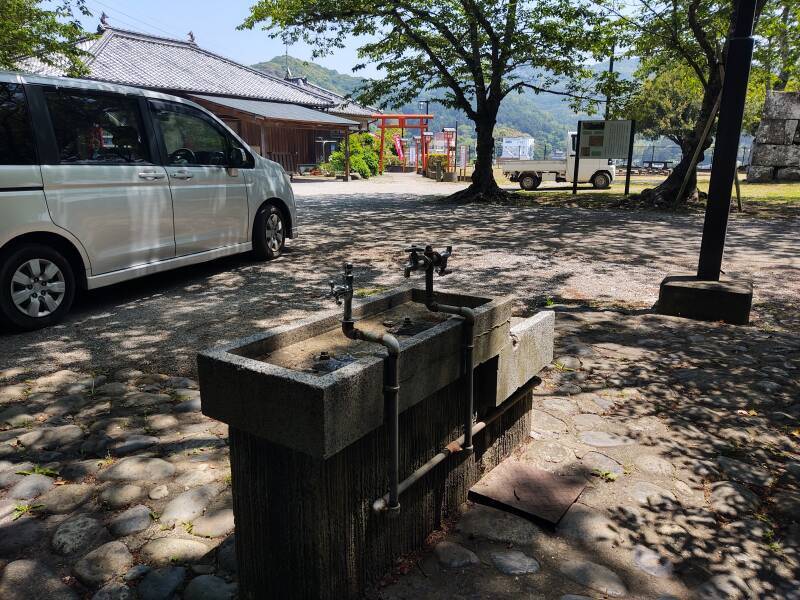
And, this lavatory building.
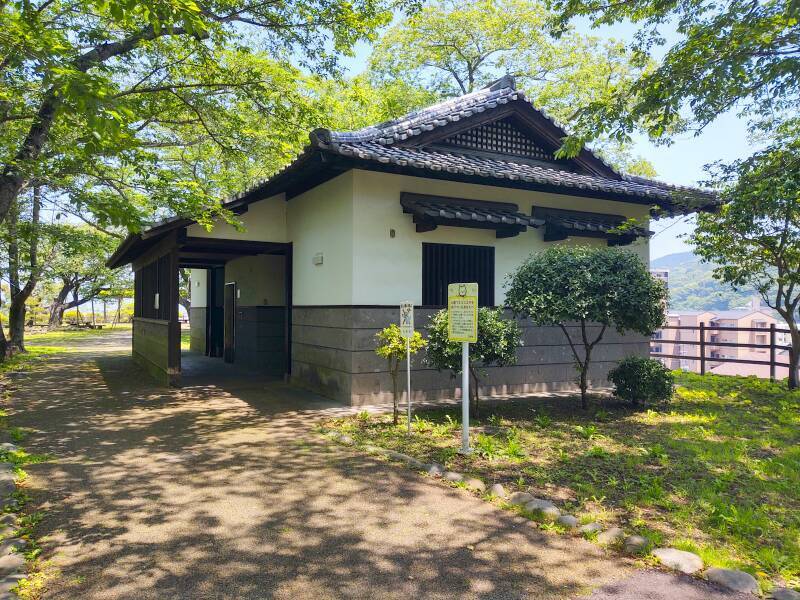
From inside you can see the Utonoguchi-mon-wakiyagura.
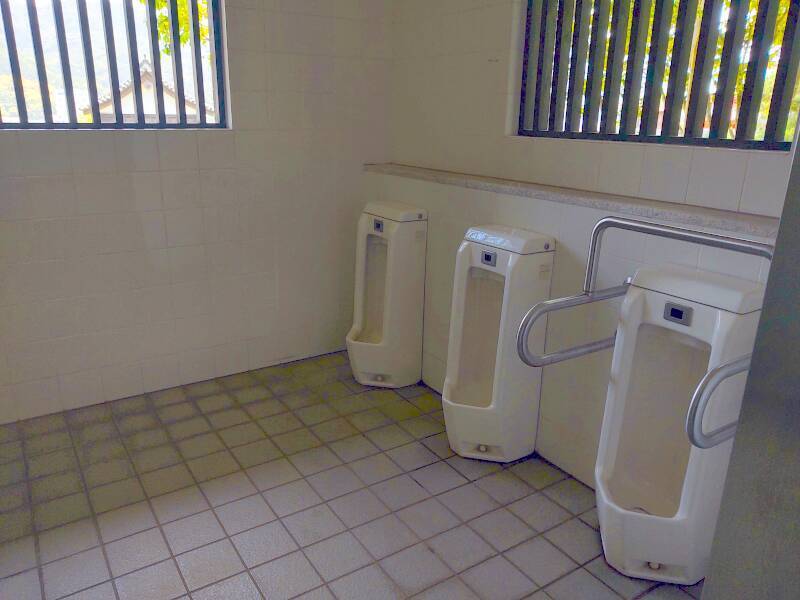
The End of the Shōgunate and the Samurai
The shōgun rule ended after almost seven centuries in 1868. Matthew Perry's naval expedition had forced the shōgun to open Japanese ports to U.S. ships. Confidence in the shōgun Tokugawa Yoshinobu fell, he resigned, and the young Emperor Meiji took full control of Japan. This return of ruling power to the Emperor came to be known as the Meiji Restoration.
Saigō Takamori was a Japanese samurai and nobleman. He was one of the "Three Great Nobles" who led the Meiji Restoration, but then he soon turned against the young Emperor and led the Satsuma Rebellion.
Saigō strongly opposed the negotiated transfer of power to the Emperor, demanding that the Tokugawa clan should forced to surrender the land and their special status. That led to the Boshin War, one of multiple civil wars that became part of the transfer of power. Saigō led the Imperial forces in a major battle, and then led the Imperial army toward Edo, the Tokugawa capital and now called Tokyo. He accepted the surrender of Edo Castle, which has since been replaced by the Imperial Palace.
Saigō opposed several of the proposed sweeping changes. He was against opening trade with European nations and the modernization of non-military aspects of Japan's society and economy. He was opposed to the planned railway system, and insisted that the funds intended for its construction should instead by used for modernizing the military.
In 1873 Korea refused to recognize the legitimacy of Emperor Meiji as head of state of the Empire of Japan, and had insulted Japanese envoys sent to establish diplomatic and trade relations. Saigō offered to go to Korea as an envoy and then behave in such an insulting fashion that the Koreans would be obligated to kill him, providing a cause for Japan to declare war on Korea.
Other government figures refused his suicidal offer, because they had seen that Japan was quite weak compared to European nations and couldn't afford a war with Korea.
VisitingKagoshima
🚧 under construction 🚧
Turned down, Saigō resigned from his government position and returned to his hometown of Kagoshima, near the southern tip of Kyūshū.
Amazon
ASIN: B000OT8KE0
Many now-unemployed samurai or rōnin followed Saigō to Kagoshima. With the end of the Shōgunate and the han system, the government had ended the rice stipends for samurai. The former samurai formed a private military academy, the Shi-gakkō, and soon dominated the Kagoshima government.
Alarmed, the Meiji government sent warships to Kagoshima in January 1877, planning to remove the weapons from the local arsenal. Fifty students from Saigō's military academy attacked one of the arsenals and carried off weapons before government forces could remove them. Over the next three days, over one thousand military students raided other arsenals and the naval yards.
Saigō was forced out of semi-retirement to lead a rebellion against a national government that he had helped to place in power.
The following month, the central government decided to send the Imperial Japanese Army, which Saigō had helped to modernize over the preceding nine years since the Meiji Restoration. Saigō organized an army and began marching north through Kyūshū, planning to march all the way to Tokyo to question, if not confront, the government.
This became known as the Satsuma Rebellion, named after the Shōgunate period han based in Kagoshima. Saigō was leading of force of 12,000 infantry and 60 artillery pieces. The Imperial forces totaled 51,800 in the Imperial Army, over 5,000 Imperial guardsmen, and 18,000 militarized policemen.
Saigō's forces were soon reduced to 3,000 remaining combatants who had lost all of their artillery and most of their modern firearms. Saigō and his last 500 men slipped out of the Imperial encirclement and retreated to Kagoshima.
Imperial forces soon arrived, outnumbering Saigō's 60 to 1. Saigō still would not surrender. The Imperial forces carefully prepared while warships in Kagoshima harbor shelled Saigō positions. The final government assault began early on 24 September 1877. Saigō was severely wounded in the hip or thigh and only 40 of his men were alive by 0600. Saigō died, the last of his men drew their swords and charged downhill toward the well-fortified Imperial positions, and that was the end of the rebellion and the samurai. The Imperial government was almost bankrupt, but it had put down the rebellion while demonstrating the effectiveness of a modern military.
The government was forced to sell state-owned enterprises such as manufacturing and mining, basically everything except the railroad, the telegraph network, and the military industries, to politically-connected merchants and former government officials. For very low prices, those men formed the initial zaibatsu, large multi-component industrial firms.
Supporters of the rebellion led by Saigō formed right-wing ultra-nationalist groups, some in the form of secret societies, some of which evolved into paramilitary organizations that remained active through World War II.
Exactly how did Saigō die? There were no eyewitness reports. The dominant legend is that he performed seppuku or ritual suicide. Someone performing seppuku traditionally has a second to immediately cut off their head if the self-inflicted stomach wound isn't working. Possibly that's what happened. Many historians say that he very likely lost consciousness due to blood loss from the leg or hip wound, and one or more of his remaining samurai beheaded him and reported that it had been successful seppuku, warrior's suicide.
Some, however, insisted that Saigō had successfully fled to Russia or even ascended to Mars. The legends persisted and grew, with some claiming that his image appeared in a comet in the late 1800s. The Meiji government pardoned him posthumously, in February 1889.
Amazon
ASIN: B01MYZHT0P
Amazon
ASIN: B08P29D7MV
The story of Saigō's supposed suicide was incorporated into the rise of bushidō or "the way of the warrior" as a national ideology in the early 1900s, became accepted as part of Japanese history, and was incorporated into the rising nationalism. For details, see "The Apocryphal Suicide of Saigō Takamori: Samurai, Seppuku, and the Politics of Legend" (Mark J Ravina, The Journal of Asian Studies, 69(3), August 2010, pp 691-721, doi:10.1017/S0021911810001518).
A statue of Saigō in hunting garb with his dog was unveiled in Ueno Park in Tokyo in 1898. It's at the south end of the park, close to the train station and a public toilet, and is still quite popular.
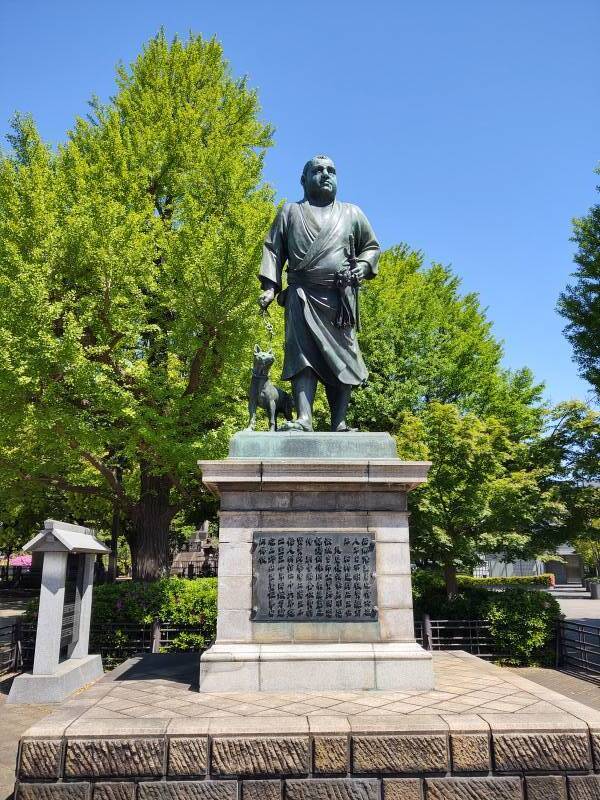
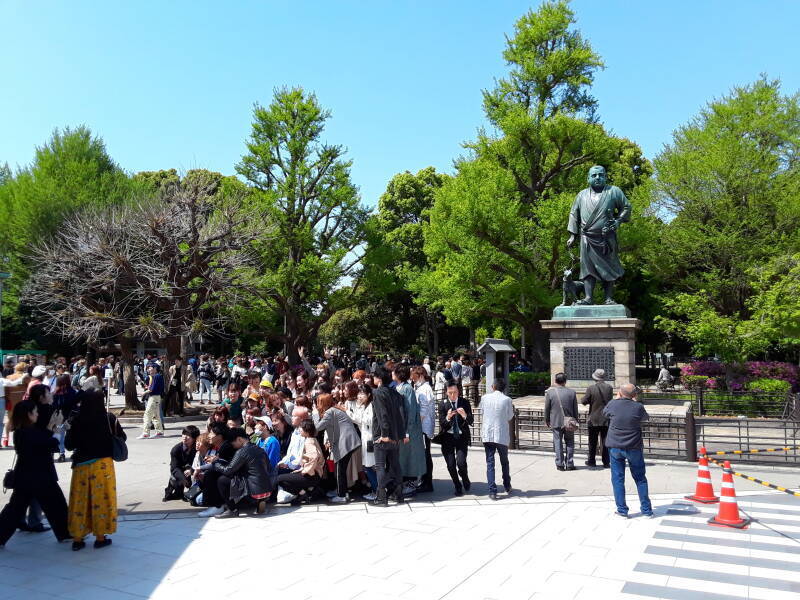
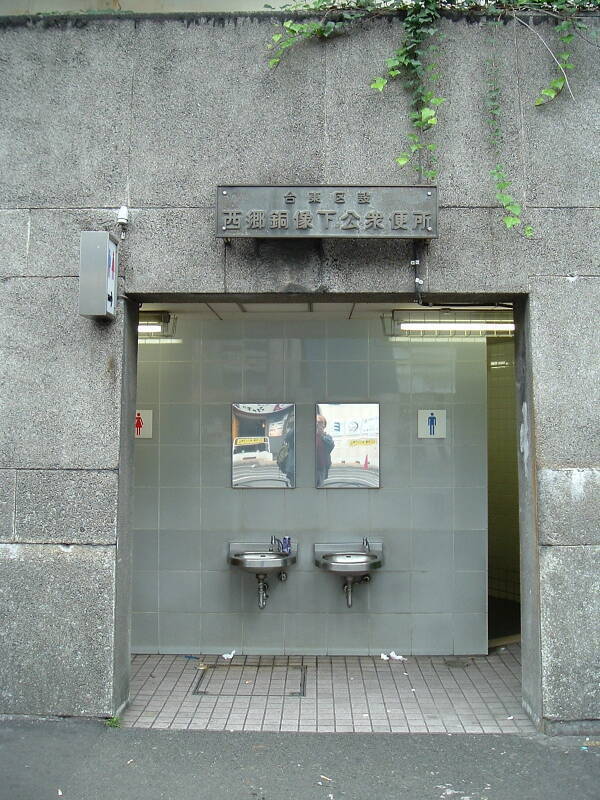
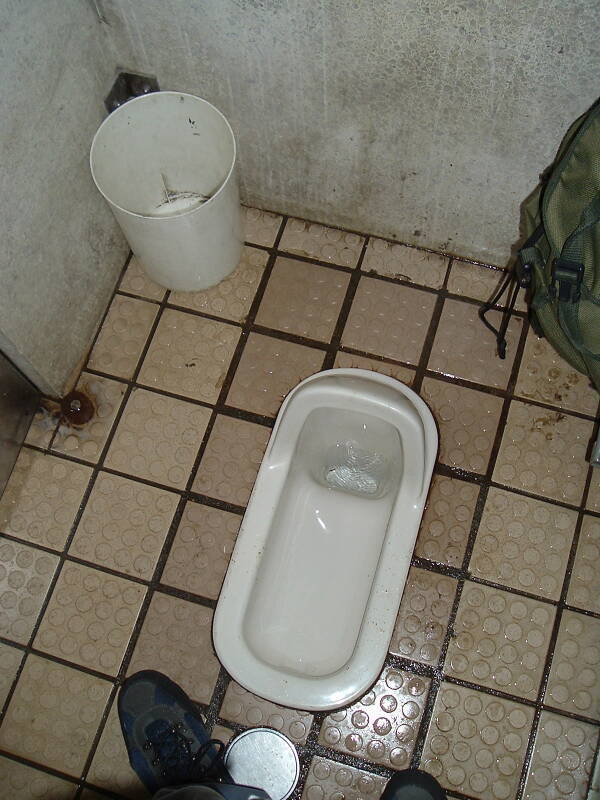
A Sani-Flush blue border indicates a toilet, sink, shower, or other plumbing that I've used.
The Toilet Guru's travel suggestions
Now some lurid advertisements from Google AdSense:
 To the Main Page
To the Main Page